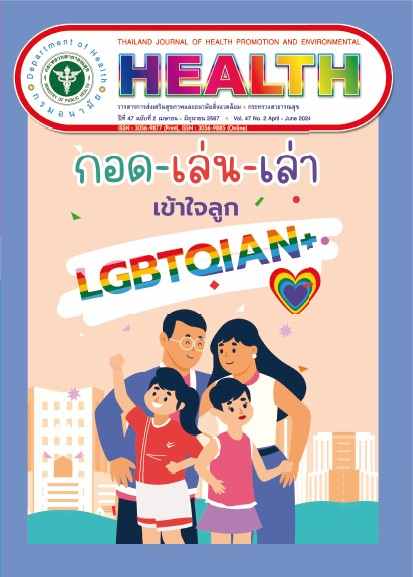Provision of oral health services for the elderly population in accordance with Thailand Oral Health Plan for Older People (2015 – 2022)
Keywords:
provision of oral health services, oral health-related quality of life, factors influencing oral health services, Thai older peopleAbstract
The aim of this study was to examine the effect of Thailand Oral Health Plan for the Elderly (2015 – 2022) on the provision of oral health services for the elderly population, access to care, quality of life and factors in oral health provision that affect quality of life. This study was an analytical study. The data were obtained from official government papers, reports, health information system (Health Data Center, HDC), and comprehensive evaluation for Thailand Oral Health Plan for the Elderly (2015 – 2022) which was collected by interviewing 4,532 respondents. The data were analyzed with descriptive statistics, Pearson correlation, multiple linear regression, and content analysis. Results showed that effect of Thailand Oral Health Plan for the Elderly (2015 – 2022) are as follows: 1) The provision of oral health services were provided to the elderly in all levels of care, and for all types of elderly population, independent or dependent elderly people in the Long-Term Care program. There were new oral health services added to the Universal Coverage Scheme (UCS). These benefits include oral examination, screening for oral cancer, and implant retained dentures. Geriatric dental education programs were also developed, and digital technology was applied for oral health assessment and surveillance. 2) All these measures significantly improved access to care among the elderly population, from 17.2% in 2015 to 35.6% in 2022. Rate of the elderly having 20 permanent teeth also increased from 54.9% in 2015 to 66.6% in 2022. 3) In terms of quality of life, the average score of Oral Health Impact Profile (OHIP)–14 was 15.84, SD 7.85. Most respondents reported having problems with physical pain and functional limitation in their mouth. 4) Factors in oral health provision that positively affected the quality of life significantly (p<0.005) were the number of dentists who had been trained in geriatric oral health care and number of dental visits. Factors that gave negative effects were aging and distance between house and health service unit.
Downloads
Published
Issue
Section
License
Copyright (c) 2024 Thailand journal of Health Promotion and Environmental Health

This work is licensed under a Creative Commons Attribution-NonCommercial-NoDerivatives 4.0 International License.

